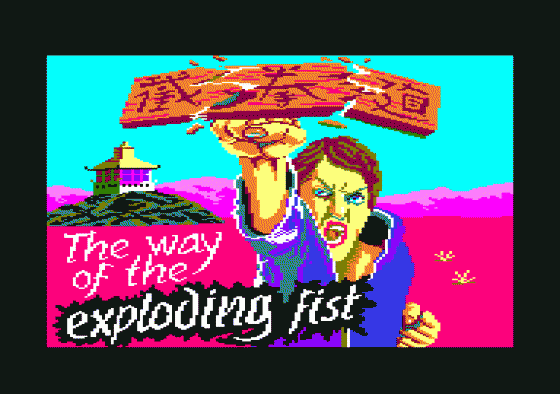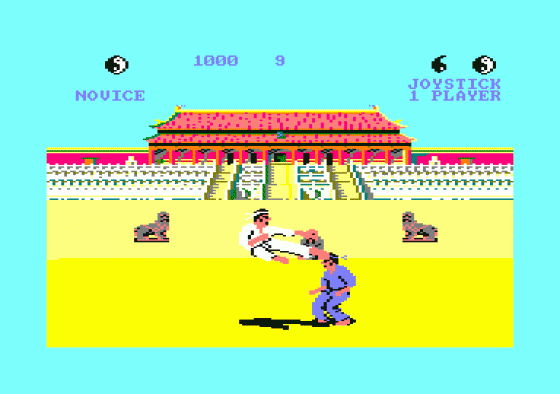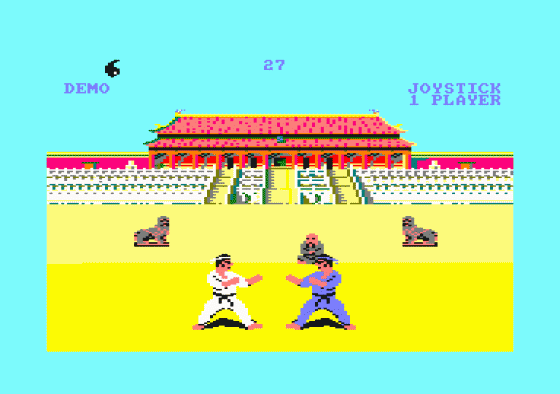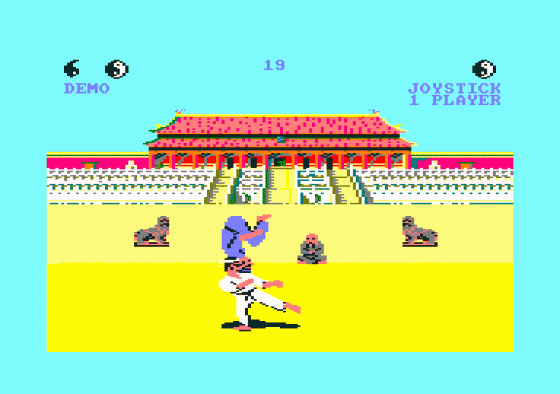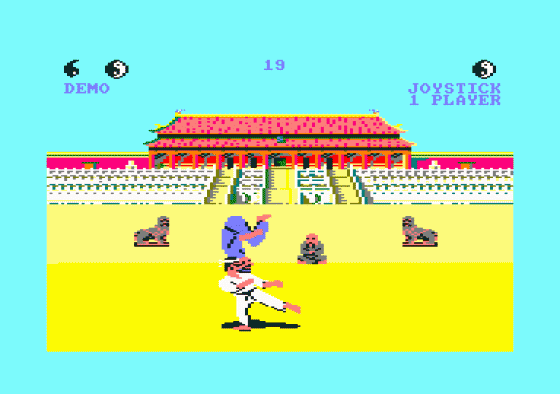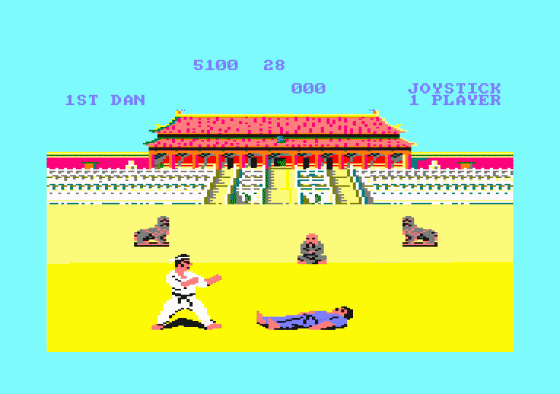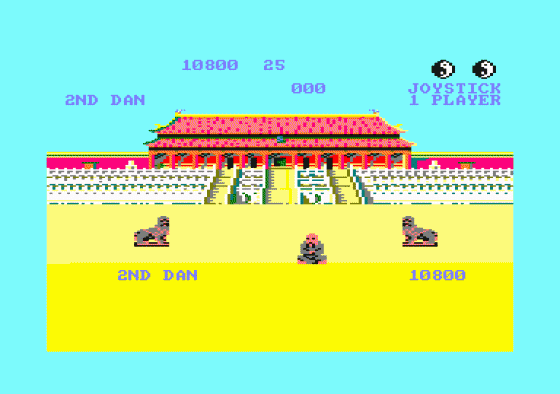
Amstrad Computer User
 1st October 1985
1st October 1985
Publisher: Melbourne House
Machine: Amstrad CPC464
Published in Amstrad Computer User #11
The Way Of The Exploding Fist
Melbourne House shot to fame with The Hobbit, the first detailed adventure with graphics and computer generated characters, Since then they have been building up a reputation for good arcade games. They have been a bit slow to produce Amstrad software, but this title is only a month behind the Commodore and Speccy versions so they are catching up.
The Way of the Exploding Fist is the best possible way for you to get into a fight with your friends. The game has one and two player modes, In the single player mode you take on a computer-generated opponent. Early on he is easy enough to catch off guard, as you progress he becomes smarter and much more agile.
The program is based on an arcade game which uses two joysticks, this gives sixteen possible positions, to simulate this on a home micro Melbourne House use the fire button as a shift key so that all positions are possible. Remembering the moves is difficult; it simply boils down to a joystick move without the fire button, making your man travel across the screen. And, with the fire button, you strike out at your opponent. This is something of a generalisation since there are more ways of hitting out than there are of running about. Some of the moves rely on your being in a crouching position before pressing the button.
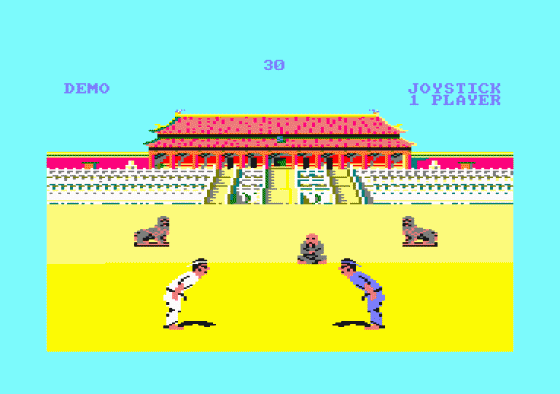
The conversion from a Commodore game has come off surprisingly well. The Commodore has hardware sprites, these may not be as flexible as full bit-mapped software sprites but they are a lot faster. This major difference does not harm the conversion. Some compromises have been made: the music only plays at the start of bouts and the movement is a little slower. The actual sprites are spectacular; large with smooth movements, they overlap correctly so that your left leg swings behind your foe with your right leg in front. Gameplay is what counts and here it is superb.
To practice the moves without the computer filling your face full of electronic sand each time you peer at the hint sheet, it is best to go into two player mode and try each move against the static opponent. Listening to his puffs and groans each time you wind him is enough to generate an evil smile on the face of even the most hard line pacifist. Once you have mastered the basic techniques it is time to take on the computer.
As the game progresses the tactics change, so the simple crouching kick which worked so well in the early stages loses its element of surprise and you tend to find yourself lying flat more often than not. To progress you will have to master somersaults, flying kicks and punches at close quarters.

Once you have got the hang of beating the computer it is time to take on a friend. Unfortunately Melbourne House have only implemented one joystick, so even if you have a JY2 your friends will have to use the keyboard. It would have been better if options had been given for one, two or no joysticks.
Scoring is not totally logical, for every move which results in your enemy falling there is a set score. To progress through levels, called dans, you need to win bouts. A victory requires you to light up two Ying-yang symbols, for felling your adversary you are awarded either one or half a ying-yang [Is that a ying? - Ed] depending on how well planted your blow was.
There are a couple of minor bugs in the program, neither of which harm the game in any way. The first is that the high scores are sorted in with the dan rating first and the score second, so a 1100 point first dan score will rate above a 20,000 point sixth dan score because one is less than six. The second bug is that the computer generated opponent splits down the middle if he beats you with the right hand side of the sprite becoming detached, I suppose Melbourne House would argue 'Don't get beaten'.
Scores
Amstrad CPC464 Version| Graphics | 70% |
| Playability | 90% |
| Addictive Qualities | 90% |
| Overall | 90% |


